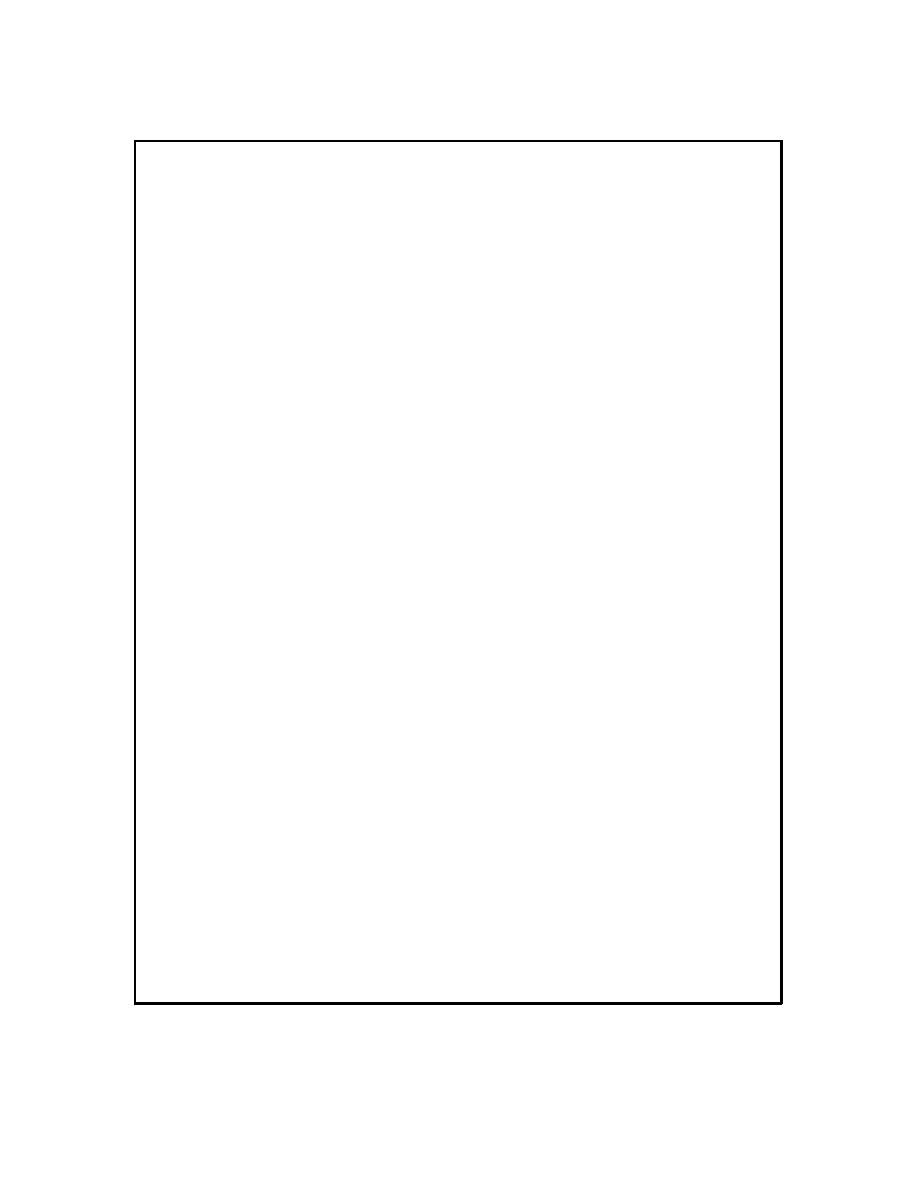
EI 02G001
CEMP-E
01 July 1997
In order to compute the bearing capacity of the pile by either Meyerhof's or Nordlund's method, it
is first necessary to estimate the internal frictional angle for the soil. Based on gradation analysis
of the boring sample of the coral sands, 2 is assumed to be 35 degrees at the far end and
30 degrees at the head wall.
To determine the total bearing capacity Qu of the pile, use the formula
Qu = Qbu + Qsu = qbuAb + CsLfs
(1)
where
Qu
=
bearing capacity of the pile, kN or kips
Qbu
=
shaft friction, kN or kips
Qsu
=
toe bearing, kN or kips
qbu
=
toe bearing resistance, kPa or ksf
Ab
=
toe bearing area, m2 or ft2 = .258 m2 or 2.78 ft2
Cs
=
shaft circumference, m or ft = 2.032m or 6.67 ft
L
=
embedded length, m or ft = 16.159m or 53 ft
fs
=
maximum mobilized shaft friction, kPa or ksf
Toe Resistance -- Meyerhof Method
The Meyerhof method computes the toe bearing resistance by the formula
qbu = F'Nqp.p # q1 = NqptanN
(2)
q
where
F'1
=
effective overburden pressure at the pile toe,
kPa or ksf
=
geometry correction factor = 1
.p
q
Nqp
=
bearing capacity surcharge factor = 60 for
N = 30 degrees and 150 for N = 35 degrees
The effective overburden pressure is limited to the overburden pressure at the critical depth,
which is 10 times the pile size or in this case Lc = 5.08 m (16.7'). This can be computed by the
equation
N'l = Lc((sat-(w) = 42 kPa (.877 ksf)
(3)
where
=
18.1 kPa/m (.115 ksf/ft)
(sat
=
9.82 kPa/m (.0625 ksf/ft)
(w
Solving equation (2) using the N'l from equation (3), qbu = 6,272 kPa (131 ksf) at the headwall
and 2,921 kPa (61 ksf) at the far end. Both of these values exceed the q1 from equation (2);
therefore, for the first term of equation (1), the toe capacity by the Meyerhof method is
Qbu = 1,299 kN (292 kips)
(4a Headwall, N = 11)
Qbu = 427 kN (96 kips)
(4b Far End, N = 6)
d)
(sheet 1 of 3)
Figure 5-7. Pile capacity by Meyerhof and Nordlund methods.
5-12


 Previous Page
Previous Page
